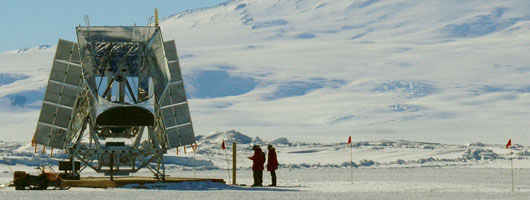Balloon Projects
proof-of-concepts at 125,000 feet

In order to prove a new instrument concept will work as predicted and in an environment similar to what it would experience once in orbit, the High Energy Astronomy group first develops a laboratory version and then develops a balloon package based on the instrument. This is then attached to a very large helium filled balloon and released to eventually float at 125,000 feet for a matter of hours to days, depending on the goals of the flight. This is also a cost effective way to perform scientific observations which can only be done above the earth's atmosphere. An additional benefit of high altitude ballooning is that the system can be built, flown, and the data analyzed in the academic lifetime of a graduate student, thereby providing for the education and training of young scientists.
All such ballooning is done in cooperation with the National Technical Scientific Ballooning (NTSB) organization within NASA and centered in Palestine, Texas. For more on high altitude ballooning in general and the experiences of veteran balloon campaigners, please see the High Altitude Ballooning page.
The HEXAGONE and HIREGS projects are cooled germanium detector instruments flown to observe cosmic x-ray and gamma ray sources and solar flares. They were launched from Alice Springs, Australia and McMurdo Station, Antarctica, respectively in order to be able to observe the center of the galaxy or to take advantage of the sun being above the horizon 24 hours per day during the southern hemisphere summer. Long Duration Balloon Flight (LDBF) campaigns are attempts to have several days at the top of the atmosphere for observations. UCSD has participated in flights from Alice Springs, Australia to Brazil as part helping to develop the technology to eventually have round the world flights.
MARGIE is a concept for a large area coded mask imaging instrument to be flown on a long duration balloon some time in the future. UCSD is part of the concept team.